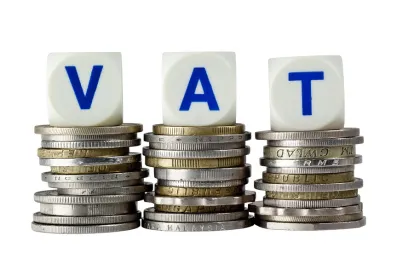The old adage that nothing is certain except for death and taxes has, until recently, told only half the story in Saudi Arabia. As the world’s largest exporter of petroleum, the Kingdom has amassed such vast profits from the sale of oil that it has not had to supplement its income from the taxpayer.
However, for Saudi Arabia’s citizens and corporations, it is hard to escape the feeling that the good times are coming to an end. The world is undergoing the biggest energy transformation since the industrial revolution, moving away from an economy which is almost entirely dependent on oil and gas. In addition, COVID-19 has decimated global demand for crude oil. The oil and gas industry is cyclical and reports of its demise are probably overstated. But this could be the biggest downturn of them all.
This is the backdrop to a wide-ranging programme of economic diversification and fiscal reform enacted in Saudi Arabia, as the Kingdom endeavours to reduce its reliance on oil money. The pace of change has accelerated since the outbreak of COVID-19. In this article, we discuss two hugely significant reforms implemented in the Kingdom: a tripling of the VAT rate to 15% and an increase in customs duties across over 2000 tariff lines.
The speed of enactment has been surprising: the new VAT rate is effective from 1 July 2020, whilst the increased customs duties apply from 10 June 2020. This has created immediate challenges, particularly in industries which utilise high levels of capital expenditure such as energy and infrastructure. These sectors have been at the vanguard of the country’s move away from oil and gas, with the Kingdom procuring a wide range of assets on a public-private partnership (or ‘PPP’) basis. In this article, we discuss some of the relevant considerations for participants engaged on these PPP projects.
VAT
Saudi Arabia introduced VAT for the first time on 1 January 2018. The Kingdom’s decision to levy a rate of 5% across most goods and services was controversial for a population used to tax-free living. However, the new tax had only a limited impact on concession-based and project financed PPPs. The 5% rate was relatively low in the context of total project expenditure and was treated either as a disbursement, passed through to the relevant authority in the tariff, or as an expense to be periodically reimbursed by the tax authorities. Project companies were able to manage the short-term cash-flow burden of VAT expenditure and recovery through ordinary working capital facilities, without any specific VAT-dedicated facilities.
However, almost overnight, that cash-flow burden has tripled in size and will place the ordinary working capital facilities under considerable stress. Even where a developer can pass through the VAT liability to the ultimate procurer, the short-term financial impact might be significant. Consider, for example, the VAT which would apply during the construction period for a development costing US$ 500 million. At a rate of 5%, the VAT bill on the EPC contract price will be US$ 25 million. From 1 July, the developer will need to find US$ 75 million. Even if this is refundable, it can take four months or more to receive each reimbursement from the tax authority.
The transitional rules for contracts entered into before 11 May 2020 might provide some temporary relief to projects in progress. These rules allow for supplies to continue to be charged at 5% until the earlier of 30 June 2021 and completion or renewal of the contract, provided the customer is a governmental body or a VAT registered business that is entitled to full input tax deduction. What should developers do in light of the new rate? As a first step, they should revisit their financial models and consider whether the relevant project company cash-flow positions are protected. The developers should also investigate the potential short-term and long-term costs of funding increases to a project’s working capital facility. They should consider whether the transitional rules will provide any assistance Finally, it would be sensible to review the cost pass-through mechanics in the concession agreements to ensure that no residual liability will remain with the project company (other than managing cash-flow in the short-term). These considerations apply equally to direct procurement projects, of which there are several notable examples in the Kingdom, and not just PPPs.
One final thought on VAT: under a typical Saudi Arabian PPP model (to the extent a typical model exists), there may be scope for the developer to apply for relief in relation to a ‘change in law’ or ‘political force majeure’. This will depend on the terms of the specific concession agreement and should be balanced against any possible adverse reaction to a claim by the procuring authority.
Customs Duties
On 27 May 2020, the General Authority of Saudi Customs announced an increase in the rate of customs duties applicable to a range of imported products, including food, minerals, chemicals, machinery, equipment, vehicles and other manufactured goods. The new rates are effective from 10 June.
Some of the increases appear minimal: from 5% to 5.5% for certain chemicals for example (although this will still mount up). Others are far more substantial. The rate for metal products (including steel) increases from 5% to 20%. Building materials were subject to rates between 5% and 12%; now rates of up to 15% will apply.
The timeframe within which the increases have been implemented means that developers and other PPP participants are rushing to evaluate the implications of the change. Although infrastructure projects in Saudi Arabia are subject to stringent local content requirements, a significant proportion of the supply chain for any project utilising process plant or other technology will be based abroad. Given the sheer number of product lines affected by the change, there is clearly potential for a significant impact on a project’s financial model.
What action should PPP participants take to assess the impact of the new customs duties? A first step for prudent developers and contractors would be to review whether they might make use of any customs duty exemptions. For example, certain projects in Saudi Arabia benefit from an exemption for the import of equipment and material for ‘industrial projects’. Participants should consider the knock-on effect for manufactured goods which are sourced within the Kingdom but which comprise imported raw materials. If those raw materials were imported without the benefit of an exemption, the local purchase price for the manufactured goods will be higher as a consequence. Importers should also look at ways they might reduce the duties payable: examples include reviewing the use of tariff codes (ensuring that imported goods are subject to the right rate of duty) and sourcing more goods in the local market.
Final Thoughts
Although the reforms to Saudi Arabia’s VAT and customs duty regimes have been made against the backdrop of COVID-19, they form part of a long-term programme of fiscal reform aimed at reducing the Kingdom’s reliance on oil and gas. We do not expect these changes to be rolled back when COVID-19 has abated.
The rapidly changing tax landscape is challenging for businesses operating in the Kingdom, who will need to work quickly to understand the impact of the reforms on their bottom line. These challenges will be felt nowhere more acutely than the PPP sector, with a number of high value, capital-intensive energy and infrastructure projects at various stages of development within the country.
If you are interested to know more on the VAT and Customs Duty Increases in Saudi Arabia and the implications for investment into the Kingdom, BDO and Bracewell will be hosting joint webinar to discuss these issues on 25 June and Time 2 PM – 3 PM(UAE). A link to the webinar registration page can be found here.
This article is co-authored by Brian Conn and Mohammed Mahmoud Madbouly




 />i
/>i

